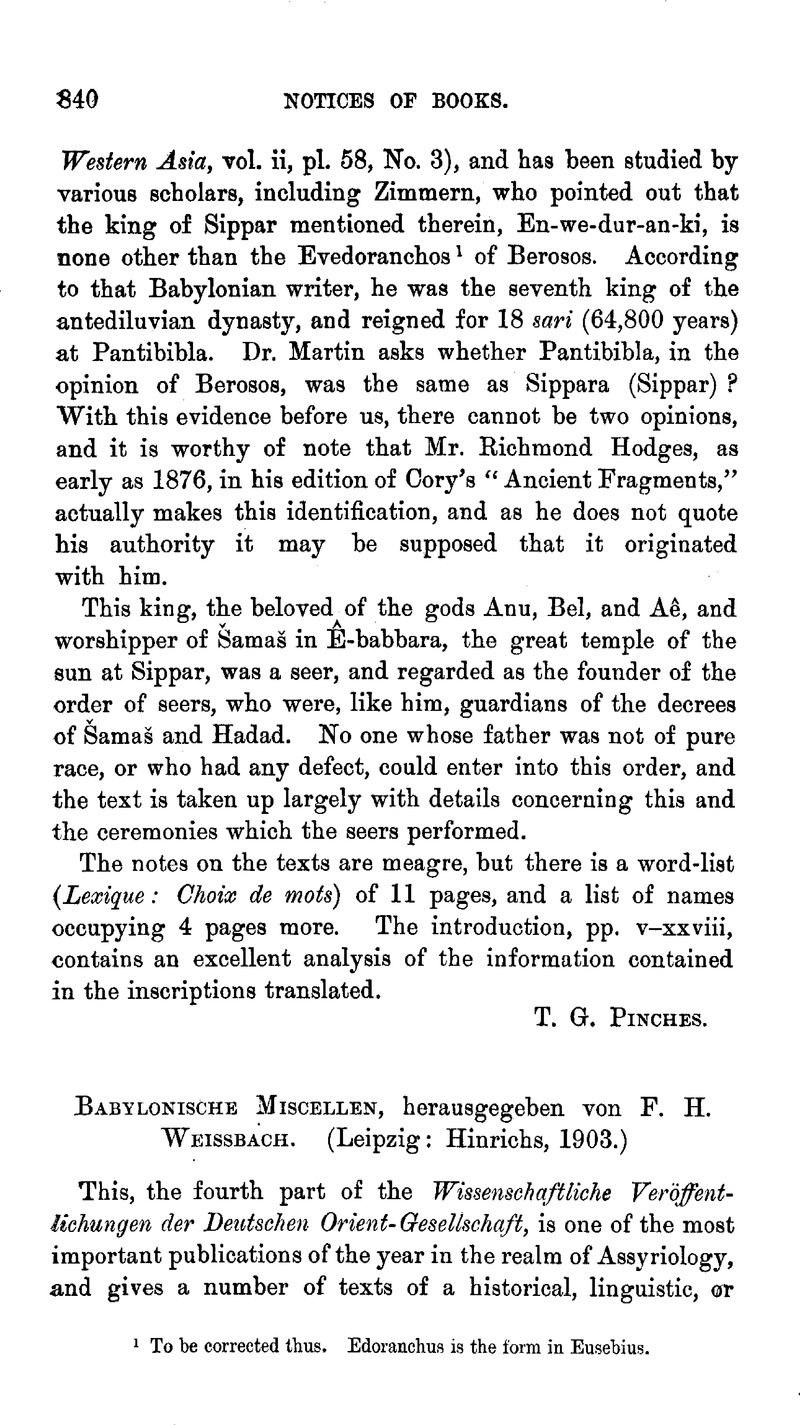No CrossRef data available.
Published online by Cambridge University Press: 15 March 2011

page 841 note 1 So read on account of the characters of which it is composed having the values indicated by these syllables, and because of the name Kara-Murdaš (Kara-ḫardaš), which the Synchronous History substitutes.
page 843 note 1 In all probability the earliest inscription of any length referring to the district is that published in Cuneiform Inscriptions from Babylonian Tablets, pt. iv, pls. 1 and 2. This text, which may be as old as 2000 years b.c., or as late as the fifteenth century b.c., speaks of a revolt raised by Zimri-êdda (surely not one of the two personages of that name mentioned in inscriptions found at Tel-el Amarna?), seemingly in some place dependent on Babylon, “when Sin-ikîšam, the Suḫite envoy, dwelt in the Suḫite fortress,” and mention is made of certain people who had returned from Maer. The West Semitic names in this text are of some interest.
page 844 note 1 Dr. Weissbach points out, in discussing No. XV, which is dated in Nabopolassar's 19th year, that there also the king's title is wanting.
page 844 note 2 Not having been allowed access to the collections, for many years before quitting the British Museum.
page 845 note 1 According to the traces in Sb and Sp. II, 982, the Sumerian pronunciation of this character with the meaning of naklu, ‘artistic,’ is galam (![]() ).
).